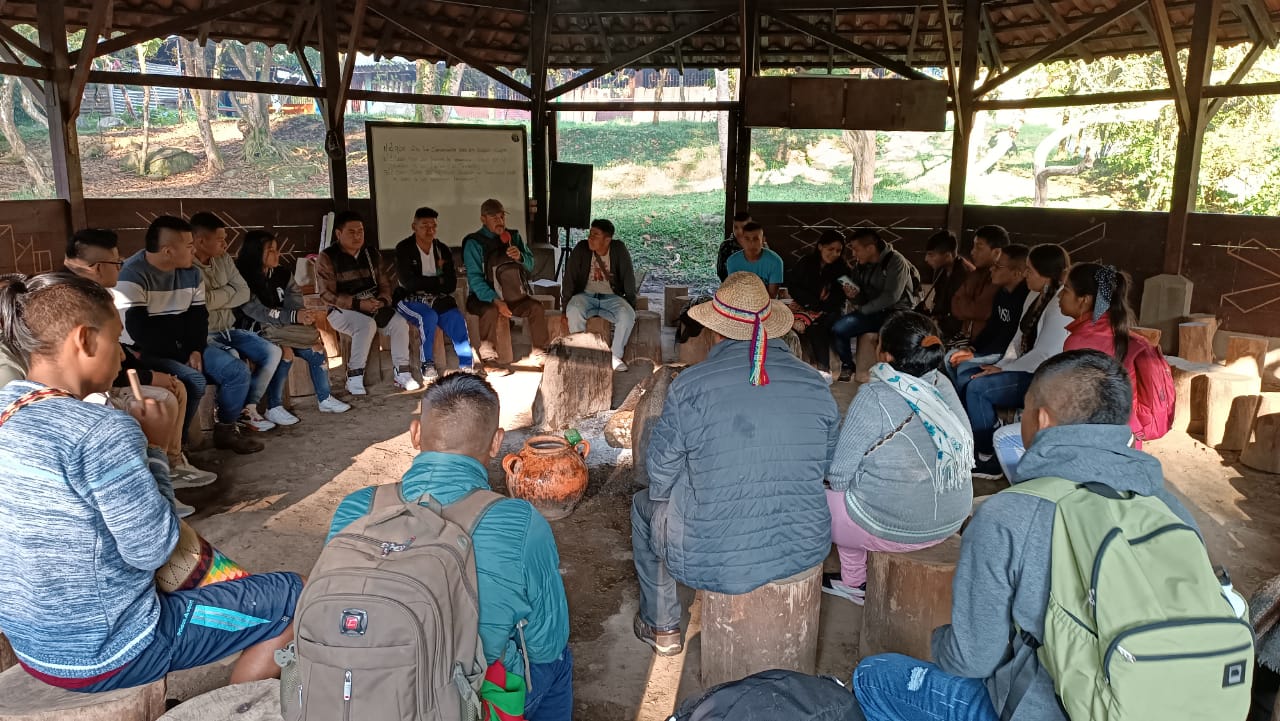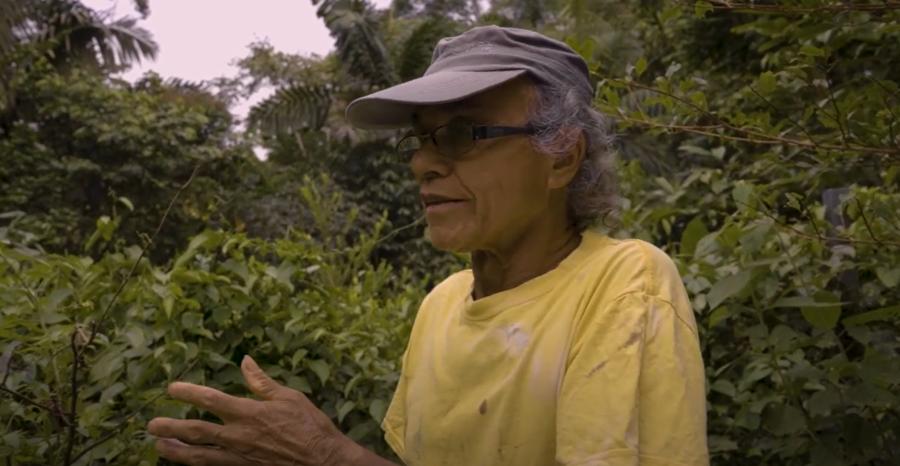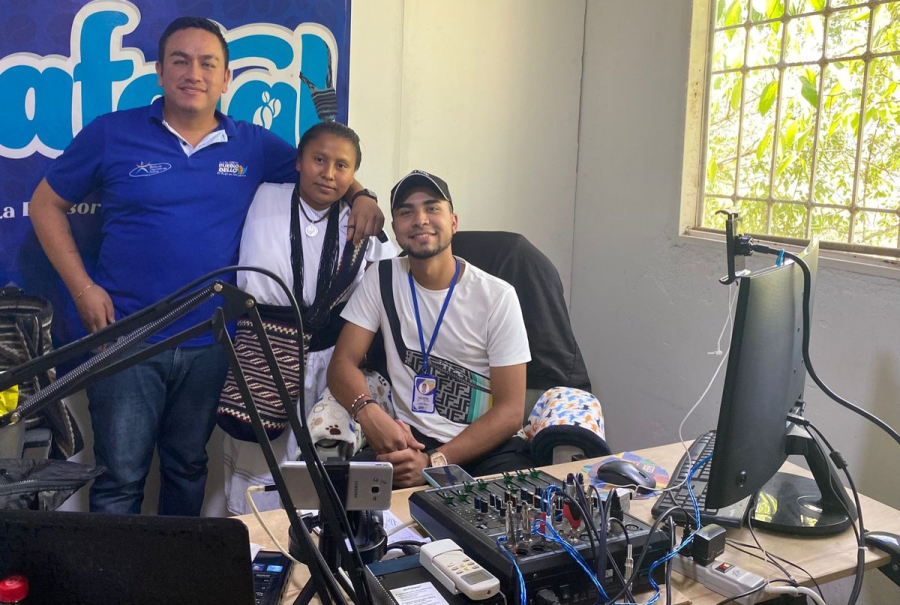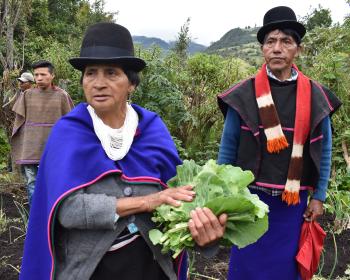
By Community Radio Nasa Stereo
The Nasa community is located in the ancestral territory of Toribio, Cauca, Colombia, comprised of three Indigenous reservations Tacueyo, San Francisco, and Toribio. 96% of its population is from the Nasa Indigenous People and the remaining 4% is recognized as mestizo or as part of other Indigenous Peoples, mainly Guambianos. The Nasa Indigenous People carry out resistance actions articulated from communication for the defense of the territory, the care of life, and the strengthening of cultural identity.
The idea of starting a communications station arose from a space for evaluation by the councils, today known as ancestral authorities, who accompanied community evaluations carried out within the Toribio territory. During the evaluations, the idea of creating a radio station in the area was inspired. With this, Nasa Stereo was created on August 26, 1996, on the initiative of the community itself and with the support of the authorities.
The mission of Nasa Stereo is to contribute to the community dynamics to strengthen the dreams and principles of the life projects of the community, taking actions for the protection of life, the defense of the territory, and the political and organizational strengthening through informing, making visible, promoting awareness and mobilizing the community in the face of territorial problems. Despite Nasa facing the consequences of war, we continue to communicate without minimum guarantees (of security) but with the conviction that we can forge hopes and alternatives that enamor the youth and motivate them to walk and strengthen the organizational process of the community.
One of the participants during the event
The community radio station Nasa Stereo has a team of 5 communicators from Toribio and San Francisco. To the present date, the station has 26 years of experience, transmitting messages of life and struggle based on the feelings, traditions, practices, and customs of the Nasa people. We provide coverage of community activities that take place in the territories of Toribio, Tacueyo, and San Francisco, a total of 68 villages and 7 neighborhoods. In an articulated manner, we provide coverage of activities at the zonal, regional, and national levels organized by the ancestral authorities. The programming schedule is diverse and is transmitted in the native language Ju'gthë'wë'sx pthüusenxi and also in the “borrowed” language, Spanish.
Having a radio is extremely useful because our territory is located in the northern part of Cauca Colombia, an area of a territorial dispute between the state and illegal armed groups, common crime, and drug trafficking cartels that fight each other for economic resources, political power, and control of the population. After the Peace Accord in Colombia, nothing changed, rather the opposite happened; the wave of violence increased and communities have had to survive amid critical moments at the political, organizational, and territorial levels due to the increase and reorganization of new armed groups, which maintain their war through drug trafficking. These groups are responsible for threats, selective assassinations of young men and women leaders, and the recruitment of children and young people into the ranks of illegal armed groups through false promises.
This issue is exacerbated by the Colombian State's disregard for our practices and customs, which has led to a loss of identity among the population. Government policies delegitimize and ignore the collective rights of our Peoples, damaging living spaces, and deteriorating coexistence and family, community, and territorial harmony.

Third encounter of the radio
For these reasons, the Nasa Indigenous communities of the Municipality of Toribio, organized and led today by the ancestral authorities called Neehwe`sx, united in the life Plan for the Nasa project’s Toribio, are positioned as referents of processes of struggle and social resistance through the radio station. Nasa Stereo, has a communications program that is part of the resistance strategies, taking to other communities the message of the mingas, work groups, meetings, workshops, assemblies, congresses, marches, and community work, among other activities that enrich the community organizational process.
Through the support provided by Cultural Survival, we were able to invite a good group of young people who arrived highly motivated to participate in the training process or, as we say, in the space of sharing knowledge on the radio, which allowed them to acquire technical and political-organizational knowledge, appropriating the management of technological tools, to continue making visible and strengthening the Nasa Life Plan of this territory. It has been a valuable experience, since the young people (men and women) have been provided with basic tools that will allow them to continue contributing to their personal and community life plans through communication.
From this experience, young people were able to connect with their roots, learn about their history, and reaffirm their Nasa feeling, and with this, they will continue to carry messages of hope through Nasa Stereo. It should be noted that with the support of Cultural Survival, we acquired the necessary equipment to strengthen the communicative work, so we feel empowered to develop good work in the community. We thank our spiritual ancestors, who from their wisdom accompanied and guided the way so that the result of this process had good results, the youth, authorities, and Cultural Survival for their support and commitment to these initiatives for good community living.
In 2022, Nasa Stereo received a grant from the Indigenous Community Media Fund which provides opportunities for international Indigenous radio stations to strengthen their infrastructure and broadcast systems and creates training opportunities for journalism, broadcasting, audio editing, technical skills, and more for radio journalists from Indigenous communities around the world. In 2023, the Indigenous Community Media Fund supported communities with 60 grants totaling $420,000 to Indigenous community media in 20 countries, supporting 87 Indigenous Peoples.



